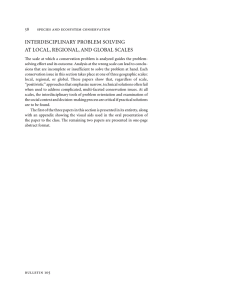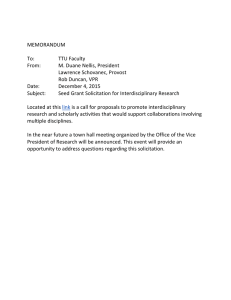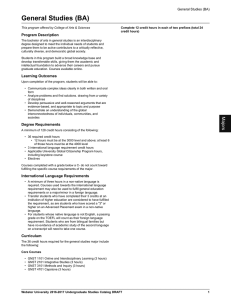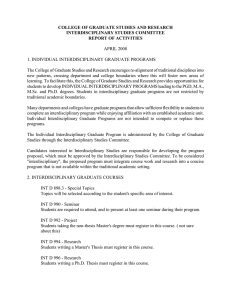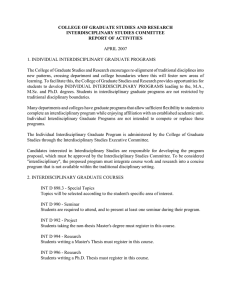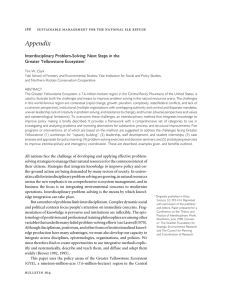Part I: Interdisciplinary Problem Solving
advertisement
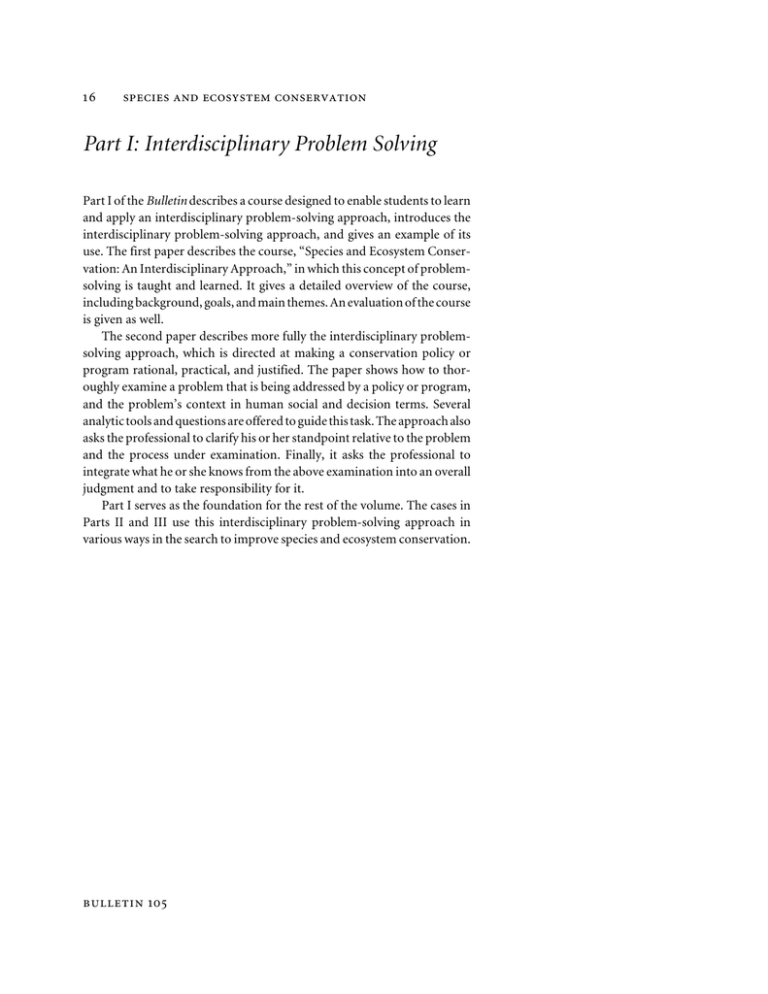
Part I: Interdisciplinary Problem Solving Part I of the Bulletin describes a course designed to enable students to learn and apply an interdisciplinary problem-solving approach, introduces the interdisciplinary problem-solving approach, and gives an example of its use. The first paper describes the course, “Species and Ecosystem Conservation: An Interdisciplinary Approach,” in which this concept of problemsolving is taught and learned. It gives a detailed overview of the course, including background, goals, and main themes. An evaluation of the course is given as well. The second paper describes more fully the interdisciplinary problemsolving approach, which is directed at making a conservation policy or program rational, practical, and justified. The paper shows how to thoroughly examine a problem that is being addressed by a policy or program, and the problem’s context in human social and decision terms. Several analytic tools and questions are offered to guide this task. The approach also asks the professional to clarify his or her standpoint relative to the problem and the process under examination. Finally, it asks the professional to integrate what he or she knows from the above examination into an overall judgment and to take responsibility for it. Part I serves as the foundation for the rest of the volume. The cases in Parts II and III use this interdisciplinary problem-solving approach in various ways in the search to improve species and ecosystem conservation.
